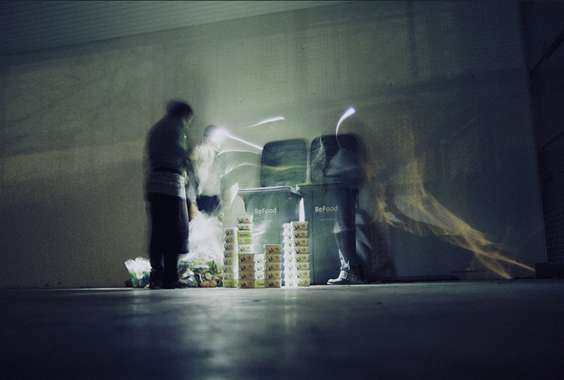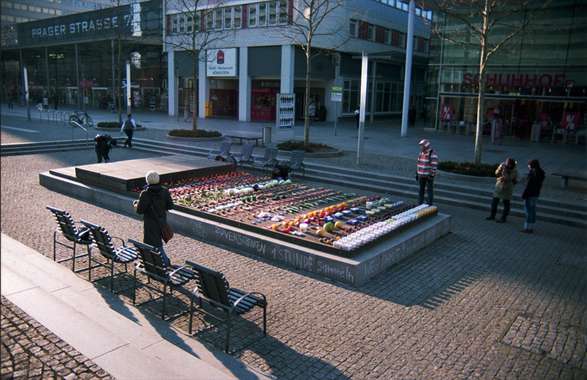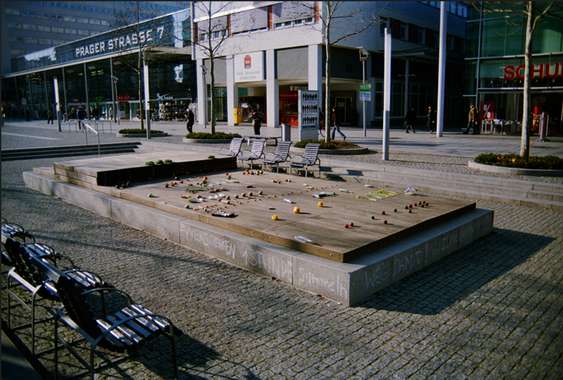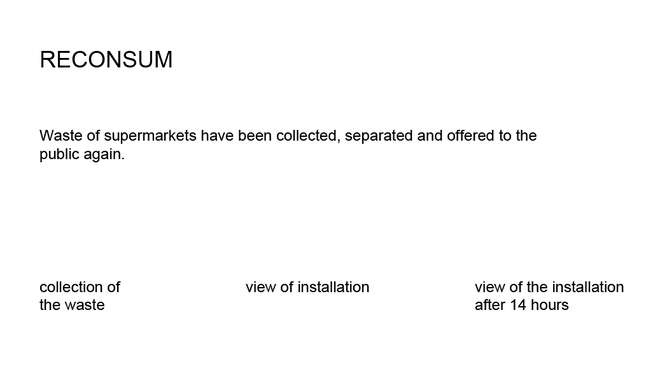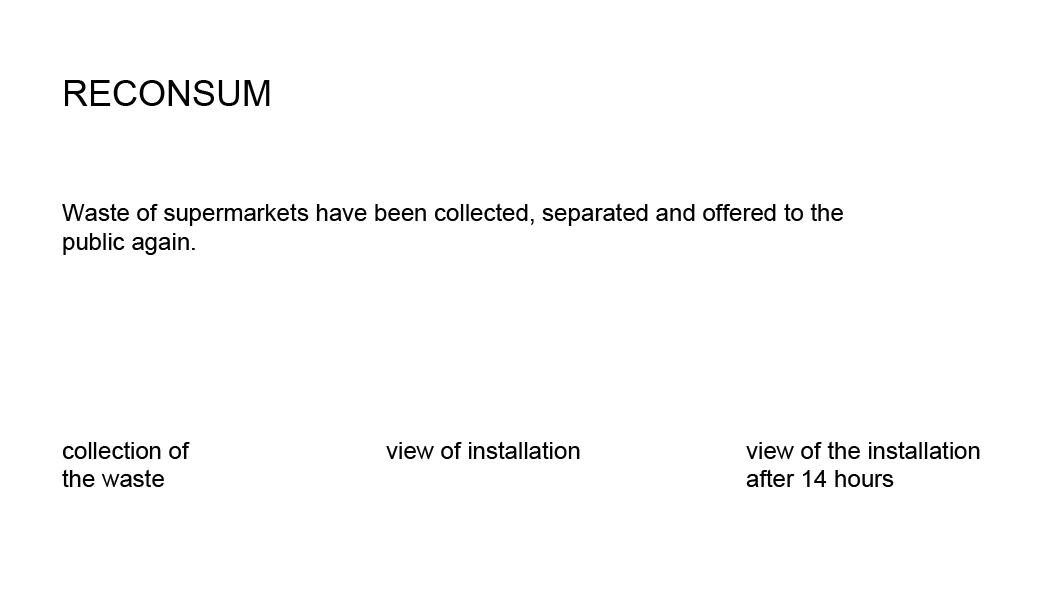RECONSUM
by lule
This work has been commented by 4 curator(s). Read the comments
Title
RECONSUM
Headline
RECONSUM
Concept author(s)
Lukas Lehmann
Concept author year(s) of birth
29.05.1986
Concept author(s) contribution
It was my concept and i realized it with the help of my friends.
Concept author(s) Country
Germany
Friendly Competition
Competition category
Mobilization
Competition field
academic
Competition subfield
student
Subfield description
Burg Giebichenstein, Halle/ Saale
Check out the Debt. 2012 outlines of Memefest Friendly competition.
Description of idea
Describe your idea and concept of your work in relation to the festival outlines:
The idea was to recollect food out of the waste-containers of supermarkets and to find a way to give it back to the public. Many things that a are thrown away are still use- and eatable. In my social surroundings “containering” or “dumster diving” - the recollection and consumption of waste - is very common. In this installation wasted food of serveral supermarkets was collected during one night, was sorted and cleaned after that and made accecible to the public the next day. While the instalation was arranged, a lot of people came to talk with us about it. We informed them were the food is from and on the bottom of the installatinon we made chalk-discribtions to tell the people that the things are to take away for free. After 14hours almost the hole food was taken by the people.
What kind of communication approach do you use?
Communication in public spaces were the public is ivolved, not only creates a endproduct people can look at. Rather it creates an interaction between artist, object and recipient, whom becomes a nesesary part of the installation .
What are in your opinion concrete benefits to the society because of your communication?
Through this installation hopefully people are given some very concret and appreciable hints to realize that there are a lot of strange and illegitimate by-poducts and consequences of the consumption-process in capitalism.
What did you personally learn from creating your submitted work?
I learned that working with a group of 20 persons can be pretty hard and is not always easally managed. I also was surprised that the public is really interested but still poorly informed about some coherences and consequences of the consumption-process in capitalism.
Why is your work, GOOD communication WORK?
What I appreciat about this kind of installation, is that the involvement , reaction and reconsumption of the public is an essencial part for the project. whithout this it would not be completed.
Where and how do you intent do implement your work?
I would like to publish it in the internet , as well as in exhibitions.
Did your intervention had an effect on other Media. If yes, describe the effect? (Has other media reported on it- how? Were you able to change other media with your work- how?)
No, this is first time i want to publish it.
Curators Comments

Alana Hunt
Although not new, dumpster diving remains a marginal approach to doing things in the urban environment. What is wonderful about Reconsum is the way it introduces the practice of dumpster diving, along with the philosophy and politics that lie behind it, to an unfamiliar public in a very practical, warm and easy going form. One doesn’t necessarily need balloons or banners to make an impact.
It would be wonderful to see this work grow and move beyond a one off event, in a way that the work ceases to be an intervention and instead becomes a matter of habit and routine.
Of course legal issues and public restrictions could make this difficult – but it feels worth a thought. What are the legalities of dumpster diving in your city? Reconsum gets me thinking, as I am sure it did the people who passed you by, about alternative free street side supermarkets popping up at regular intervals around the city. Imagine if instead of being an unanticipated surprise on the urban landscape, such events became part of a community’s habit – free, dependable and fluid transactions of re-consumables. The unwanted not only wanted, but suddenly needed.
It might be worthwhile deepening the collaboration that helped to shape this work, in order to develop a method of ‘distributed-dumpster-diving’ that would allow this to become a regular occurrence. One never knows where things could lead.
The photographs that document the work are also beautiful. The lighting and the movement of the shadows – at night, in the morning and then in the evening – all help to convey the story intuitively. Though I found myself longing for more, for a detail of what was available, of what was taken first. I wanted to know if people hesitated or went straight in to take what would soon be theirs. I wanted to hear the conversations and to understand the dynamics of the social exchanges that took place that day.
The documentation of fleeting works like this is always a difficult task, but it is worth giving attention to. We have become quite accustomed to the idea that it is the concept that will take precedence over the form. But we forget that it is the form, an image, a phrase or a remnant of some sort, that will enable this moment (and in turn this concept) to have a life in other environments and relationships with other audiences.
This does not necessarily mean more images, at times there is an overload of unnecessary images of creative interventions when sometimes one concise image will suffice. It is about finding the right balance of form in relation to your idea. Your images are of a beautiful quality – perhaps there could be words, a more detailed story that accompanies them. Or maybe in the long run more detailed images and text could form part of a manual about the practice of publicly distributing the produce of a dumpster dive.
Reconsum is beautifully useful.
Run with these ideas in any direction you like Lukas – but it is a project that is worth running with further.
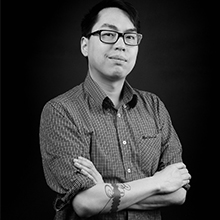
Kevin Yuen-Kit Lo
This is a very effective relational art project that draws attention to some important issues. Though the concept is quite straight-forward, it addresses notions of consumption and waste, public and private space and property, gift economies and trust, as well as, obviously, but also importantly, food (and food security, a growing issue of concern).
I also really appreciate the aesthetic qualities of the project, particularly the arrangement of the food which is visually quite beautiful and stunning, and would have liked to have seen more documentation of the square as the food was taken by the public and the "sculpture" changed form. Perhaps a stop-motion video would be an interesting piece of documentation to add to the project.
What I think would really make this a very successful project would be if this intervention was performed regularly, as it would have the possibility of really changing social relations between people within the community, and challenge notions of capitalist space and exchange. A community within the community would be formed (of the people performing the action and those "using" it, perhaps eventually blending over) and it would also become a direct challenge to the supermarkets and other institutions of consumption in the city.
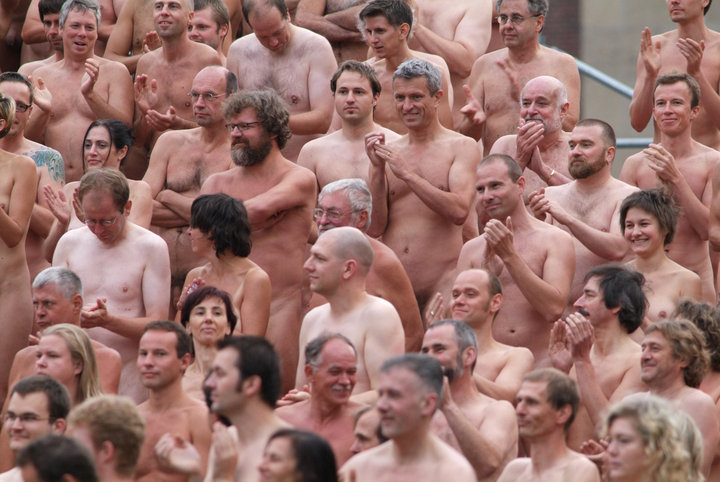
Alain Bieber
I had my first dumpster meal 2009 at the "Subversiv Messe" in Linz, Austria: Malin Neuman from Sweden (http://konstapan.blogspot.fr/) collected food, cooked backstage and served amazing meals during the fair to everybody. And yes, I loved it! And what I really like about the project "Reconsum" is to take this existing concept of “containering” and transform it into a "participatory food art installation" in public space. I like the idea to offer something to the public, they get something for "free" that was even free and available before - and furthermore they can be "educated" and informed in a very friendly way about food waste, re/consumption, sustainability etc. And eating together is in all cultures an important pillar of communication - in german you even say: "Liebe geht durch den Magen" ("The way to a man's heart is through his stomach."). Nothing more to say: Thumbs up, keep on "dumpersting"!

Aaron Gach
There are a couple of common pitfalls that threaten projects seeking to blend art & activism: 1) good politics and bad art; and, 2) good art but the politics become subordinate (or worse - exploited) by aesthetics. This project manages to leap over both pitfalls with ease. Dumpster-diving in itself is a righteous activity that bears witness to the wasteful surpluses produced in our consumer culture. Sharing that bounty with others is twice as nice. This project is a wonderful application of a tried and true Food-Not-Bombs strategy to reclaim perfectly good foodstuffs and redistribute them to the public (not merely the "poor and needy").
What pushes this work outside of the established political context into the realm of "Beyond" is the attention to detail, display, duration, and documentation. The first image completely captures the act for me - like ghosts in the night haunting back alleys in search of setting an error to rights. The bounty stacked high seems to have a glow of its own. In short, it's a meaningful image that conveys a greater truth. The display of food in the public thoroughfare is both aesthetically interesting and actively participating in the politics it seeks to address. The rows of food - cleaned and organized - is evocative of grocery-store strategies. Further, it’s notable that the artist mentions the interactions with passersby during the installation of the work. Finally, the artist has documented not only the prep work, and the installation, but also the result after a significant amount of time has passed - enough time to see that the work has clearly been well-received by the community.
Considering the amount of care and effort that went into the project, I was a little surprised by the written submission. Bearing in mind that the applicant is from Germany and English is most likely a second language, it would be advisable to use spell-check for future proposals, write-ups, and artist statements. In most cases the grammar is fine but numerous words have been misspelled – an easy mistake to avoid in the future.
Are there plans to continue this work? I could imagine this model spreading to other towns/cities. Equally, I could envision a project like this becoming a regular (monthly?) event to help build community and address questions of waste and consumerism. Are there other aesthetic strategies that could also emerge (scale? design? interactivity?).

